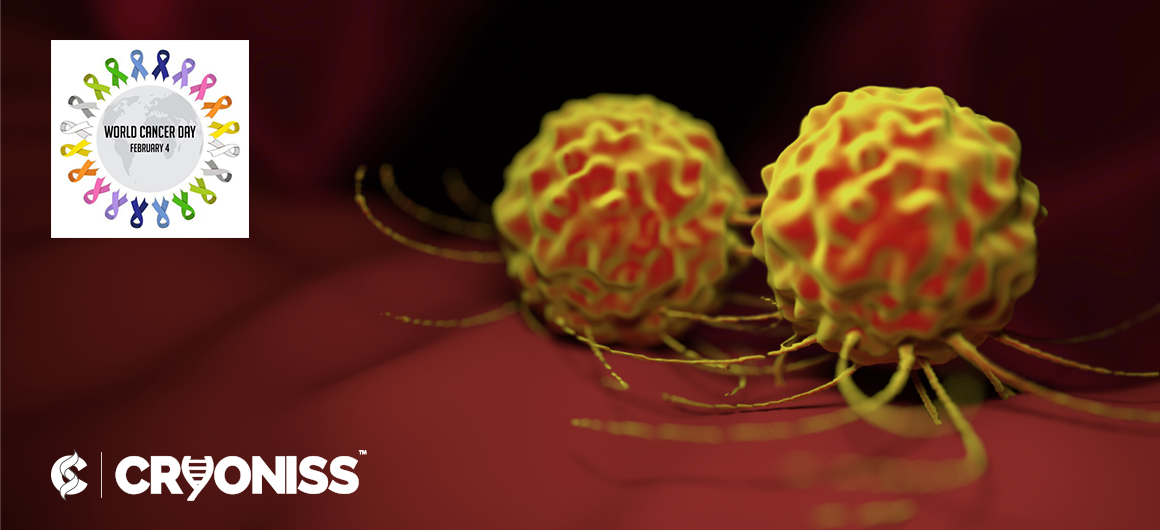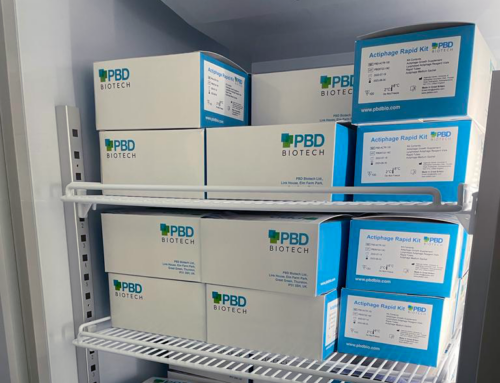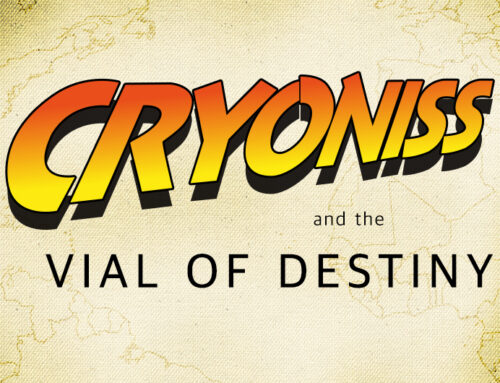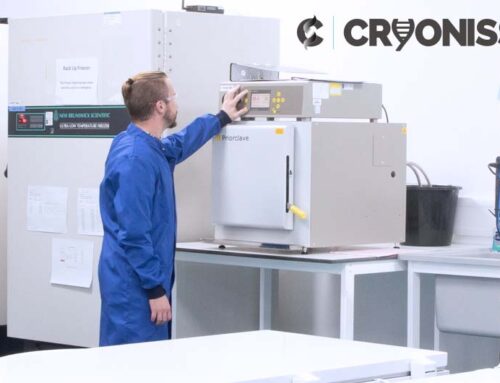World Cancer Day – February 4th 2022
World Cancer Day – Closing the Care Gap.
Today is World Cancer Day. At Cryoniss, we are motivated every day to play our part in the development process of life saving therapeutics and improving patient outcomes.
Cancer is a devastating condition that affects 1 in 2 people in the UK and is the second-leading cause of death worldwide, even though, astoundingly, at least one third of cancers are preventable.
World Cancer Day is led by the Union for International Cancer Control (UICC) and aims to raise awareness of the causes, treatments and preventions of cancer whilst enabling global change through development of therapies and improved access to life-saving treatments. The theme of this year’s event is “Closing the Care Gap.” The movement aims to highlight the significant divide in cancer care within all countries, irrespective of income.
During development and throughout life, cells divide in order to grow and for tissue homeostasis (maintenance of a steady state though control of cell divisions, deaths and metabolic function). Healthy cells have a fixed lifespan and will only undergo a specific number of divisions. At the end of a cell’s finite lifespan, it will undergo a programmed cell death called apoptosis.
Cancer cells acquire a set of capabilities which enable healthy cells to develop a cancer phenotype; evasion of apoptosis; self-sufficiency to growth signals; insensitivity to anti-growth signals; tissue invasion and metastasis; limitless replication and sustained blood vessel formation.
There is significant variation in the types of cancer, though all appear to share these characteristics to induce disease. Cancers can be classified by the cell type they originated in. The majority of cancer types appear as solid tumours such as carcinoma (epithelial origin), sarcoma (bone/soft-tissue origin), lymphoma or myeloma (immune cell origin), or brain/spinal cord (central nervous system cell origin). Cancers of the blood however, generally termed leukaemias, do not typically form solid tumours.
However, that is not to say that every lump is cancer and not all tumours are cancerous. Benign tumours are composed of generally healthy cells and pose no risk to life while malignant tumours are fast-growing and composed of cancer cells which can readily move into other tissues and cause the spread of cancer throughout the body. Other tumours may be pre-cancerous and show some cellular abnormalities which may turn into cancer.
There is an endless list of factors which could contribute to development of cancer, some which we can prevent and others we unfortunately cannot. Some people are more at risk of developing cancers than others though inheritance of cancer-related genes. The most common example of this is the BRCA1 and BRCA2 genes in breast cancer, whereby women with BRCA1 mutation are 50-70% more likely to develop breast cancer that someone without the mutation. https://www.cancer.gov/about-cancer/causes-prevention/genetics/brca-fact-sheet
However, genetics only contributes to 5% of breast cancer cases. There are numerous other factors to consider. Other non-modifiable factors include age, carcinogens and weakened immune systems but there are also a number of factors we can control in order to reduce our risk of cancer. It is well known that alcohol and tobacco consumption are closely linked to a number of cancers, most notably, lung, mouth and throat, liver, bowel, stomach and breast. Reduction in the use of these products is capable of significantly lowering the associated cancer risk. Obesity is also associated with a range of cancers and generally correlates that the more obese, the higher the cancer risk. Similarly, consumption of processed foods, red meats, high salt and low fruit/veg diets are closely associated to cancers of the stomach and bowel. However, weight loss and healthy diets are simple solutions to mitigate these risks. Other common risks include ionising radiation from the sun leading to skin cancers as well as infections such as Human Papilloma Virus (HPV) leading to cervical cancers though precautions such as sun creams and vaccinations are effective preventative methods.
Our NHS is impressively equipped to treat a vast range of cancers. Treatments vary depending on the type of cancer and other factors, but may include surgical tumour removal, chemo/radio/immunotherapy or hormone and gene therapies. However, in line with the theme of this year’s World Cancer Day, Closing the Care Gap, it has been noted that there is significant differences in the way different people’s treatment is approached.
*Taken from World Cancer Day website
It is absolutely vital that as a population we strive to reach health equity to enable everyone to receive the best quality of care, regardless of ethnicity, gender norms, age, socioeconomic status or the rural-urban divide. The only way to achieve this is with new innovation and new ideas. Have you got any?
Useful links and references
https://www.worldcancerday.org
https://www.cancer.gov
https://www.cell.com/fulltext/S0092-8674(00)81683-9#secd189071e105
https://www.cancer.gov/about-cancer/causes-prevention/genetics/brca-fact-sheet






